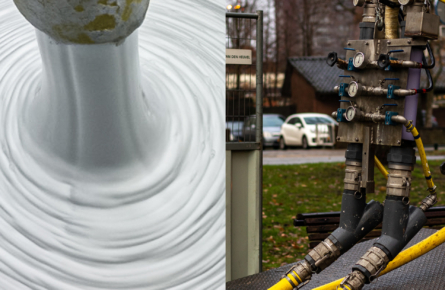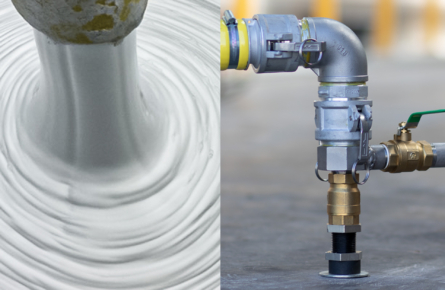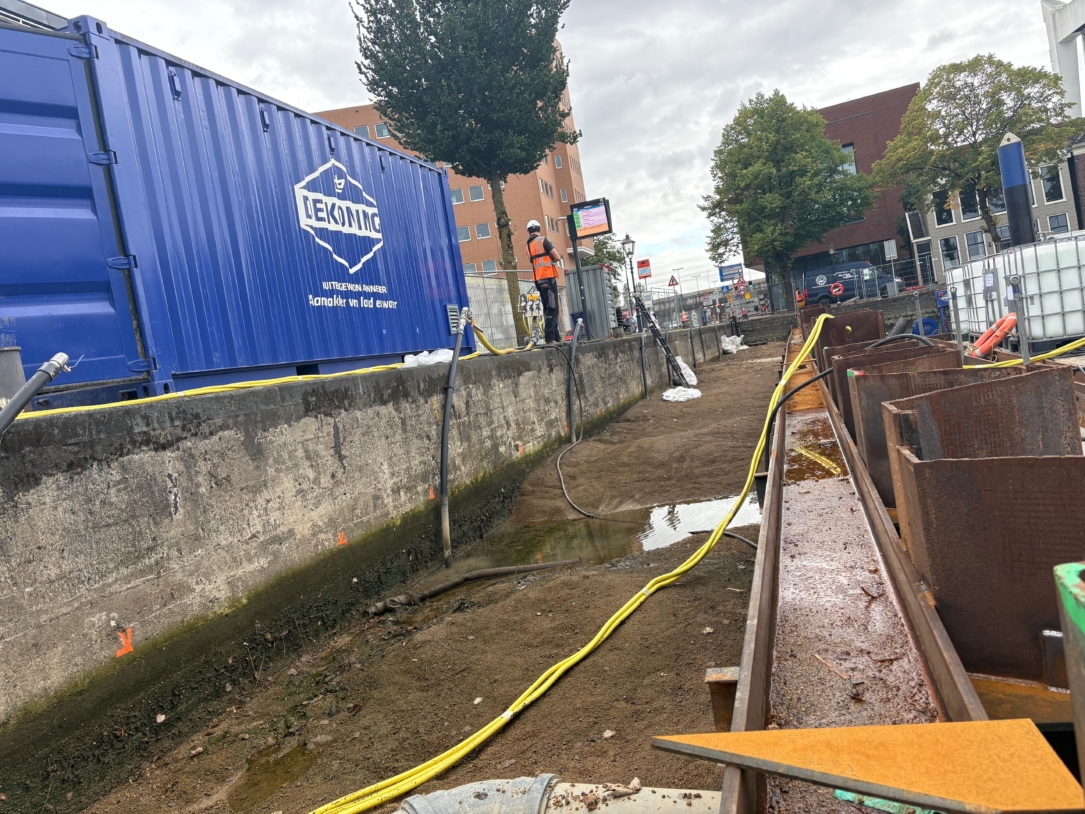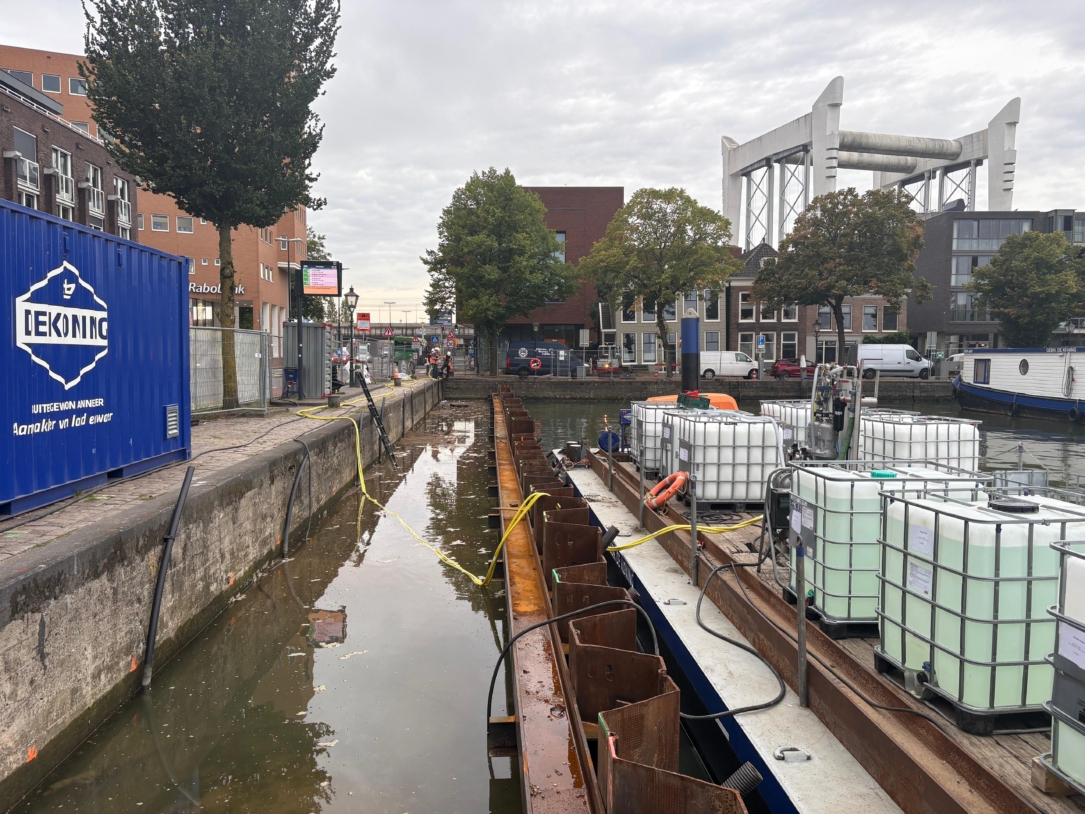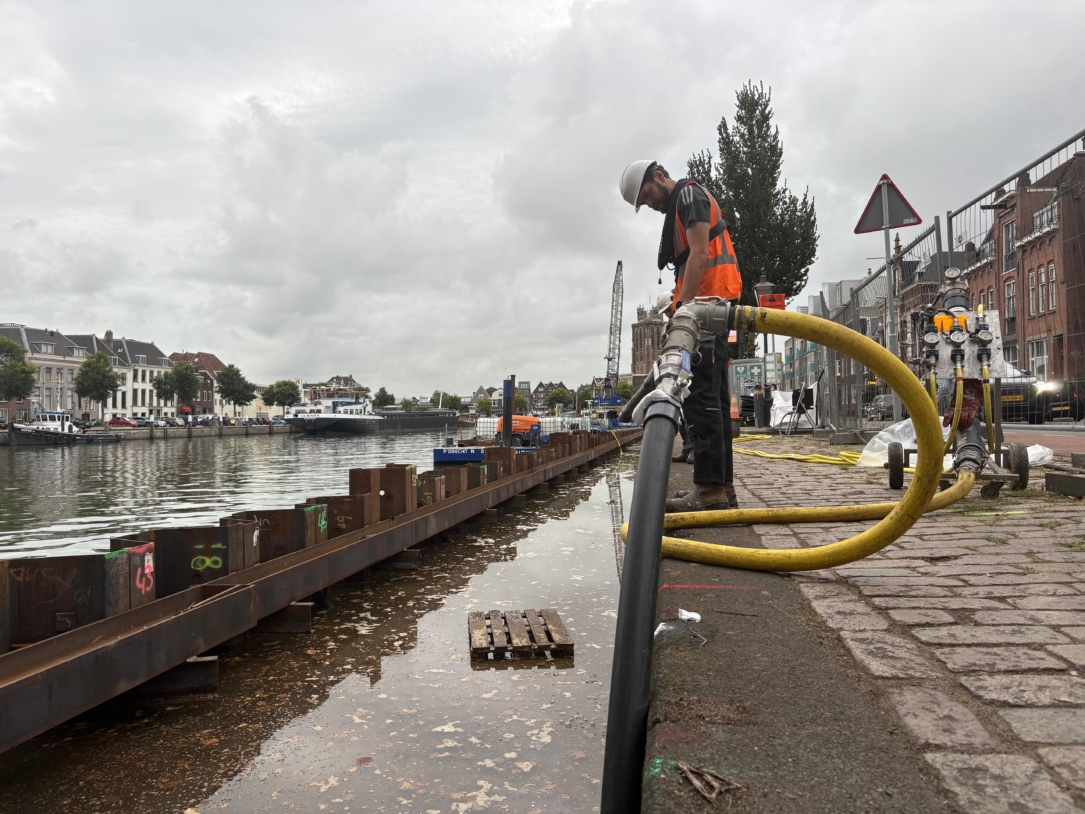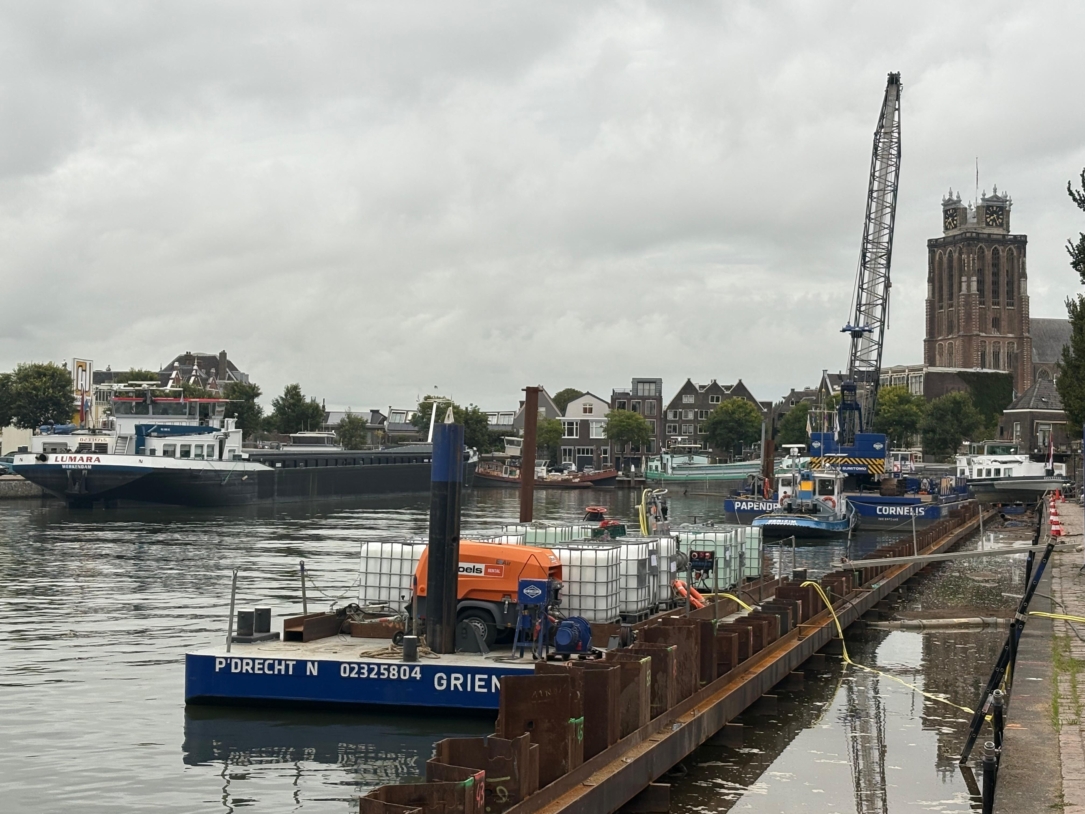
Wharf void filling – De Achterhakkers.
Benefil participated in an exciting renovation project on the Achterhakkers Quay in Dordrecht.

What's the situation?
The wharf is situated between the Achterhakkers and a small port in a historic district of Dordrecht. Benefil was hired to fill several voids along the length of the quay, about 250m long, that had formed within the wall.
It is part of an ongoing renovation project by Dordrecht city council to refurbish the wharf. Part of this project includes expanding the width of the wharf by 3m. Consequently the original wall needed to be repaired before the project could continue.
Washouts
The voids and cracks within the wall were likely caused because of a ‘washout’. Washouts are a common problem in quay walls. As the water fluctuates with the tide and the ships passing by it continually displaces sediment causing the wall to slowly deteriorate.
In this case study you can read how Benefil specifically approaches jobs involving quay walls. It explains why the composition of our hardfoam is uniquely suitable as a solution to this problem.

From specifications to process
Our team allocated 5 days to complete this job. It was important to execute the project efficiently as any delays might have affected the schedule in the next stage of the renovation.
Also for this project we used 275m³ of our hardfoam Rg30. This product is a higher density foam, making it perfect for quay walls because it offers more structural support as it hardens.
What was the plan?
Firstly a pontoon was employed to transport our IBC’s along the water to the correct location. The IBC’s contain resin and hardener which is used to create our hardfoams. Then a crane, also stationed on the water, would exchange the empty IBC’s for new ones.
From the pontoon a pumping unit would take the materials across the gap between the water and quay to our foaming gun.
Finally 63 pipes were installed into the wall at multiple points prior to our arrival. To access the voids we simply connected our hoses from the foaming gun to the pipes.
Logistically the process was fairly straightforward and by working from the water, instead of the road, we could work faster and guarantee minimal disruption to traffic and pedestrians. A win for everyone.
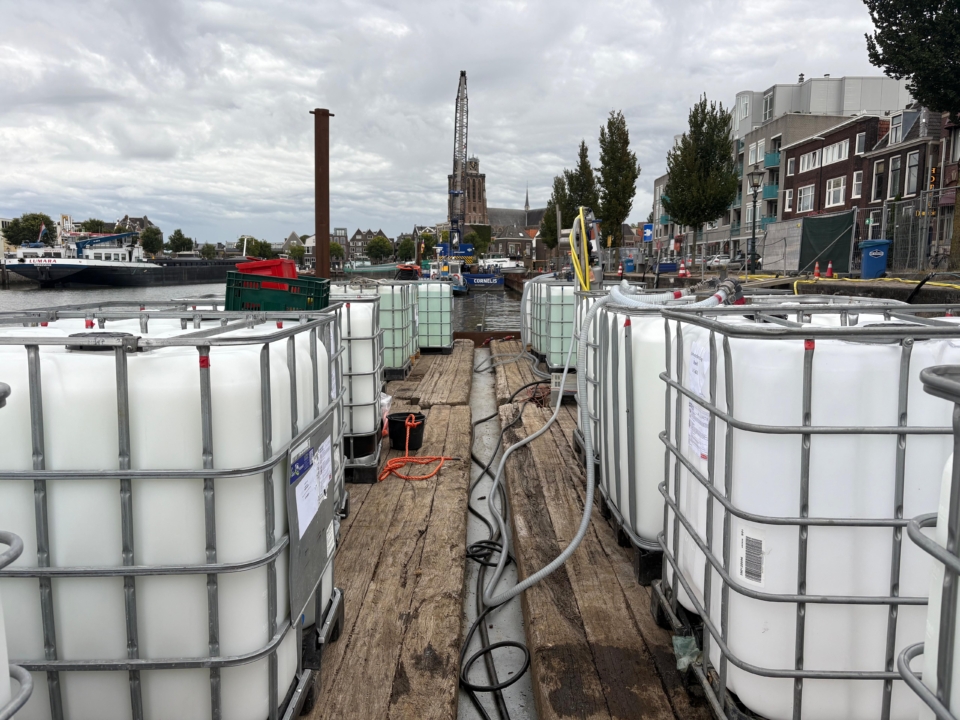
Smooth Sailing?
Every job has unique circumstances and challenges, especially when water is involved.
Besides navigating the logistics our operators needed to adapt to the changing tide. Due to this the worksite was flooding over the course of the day making it more complicated for the team to work along the wall.
Unexpected challenges
As well as the pipes along the quay wall there were several empty concrete planter boxes on top of the quay, each with a large hole inside. This would allow our operators another point from which to fill the void, this time from above.
Unfortunately as the foam was pumped into the void from the side pipes it would consequently escape from the adjacent hole. As a solution we applied a quick setting concrete to seal the holes.
Which products did we use?
For this project we used RG30 foam. However depending on your needs we provide a range of foams varying in density from medium to strong products.
Contact us
Please send us a message if you would like more information about our work or want to enquire about a specific project you have, we’d love to hear from you! You can find us through our contact information:
info@resinsindustry.com
info@aquaresins.com
Office number: +31 (0) 487593778
